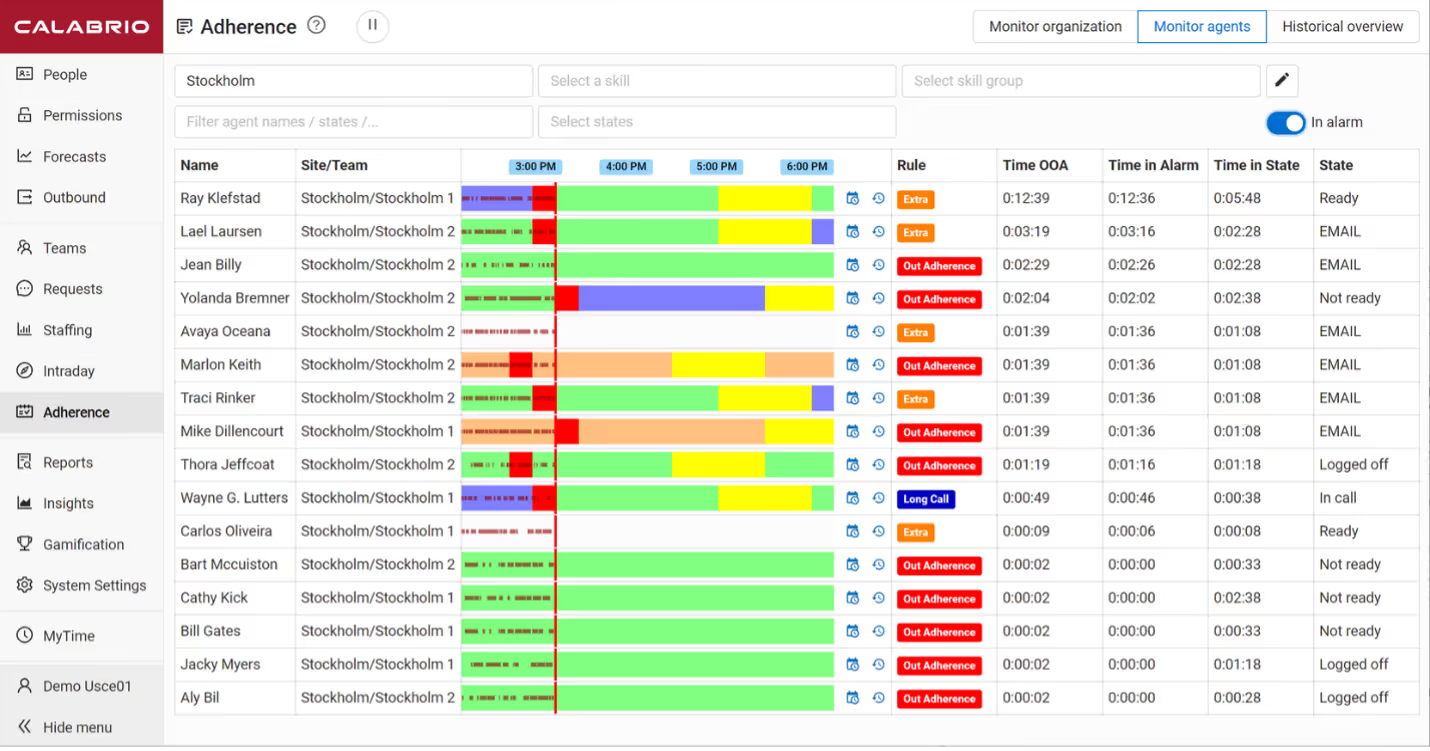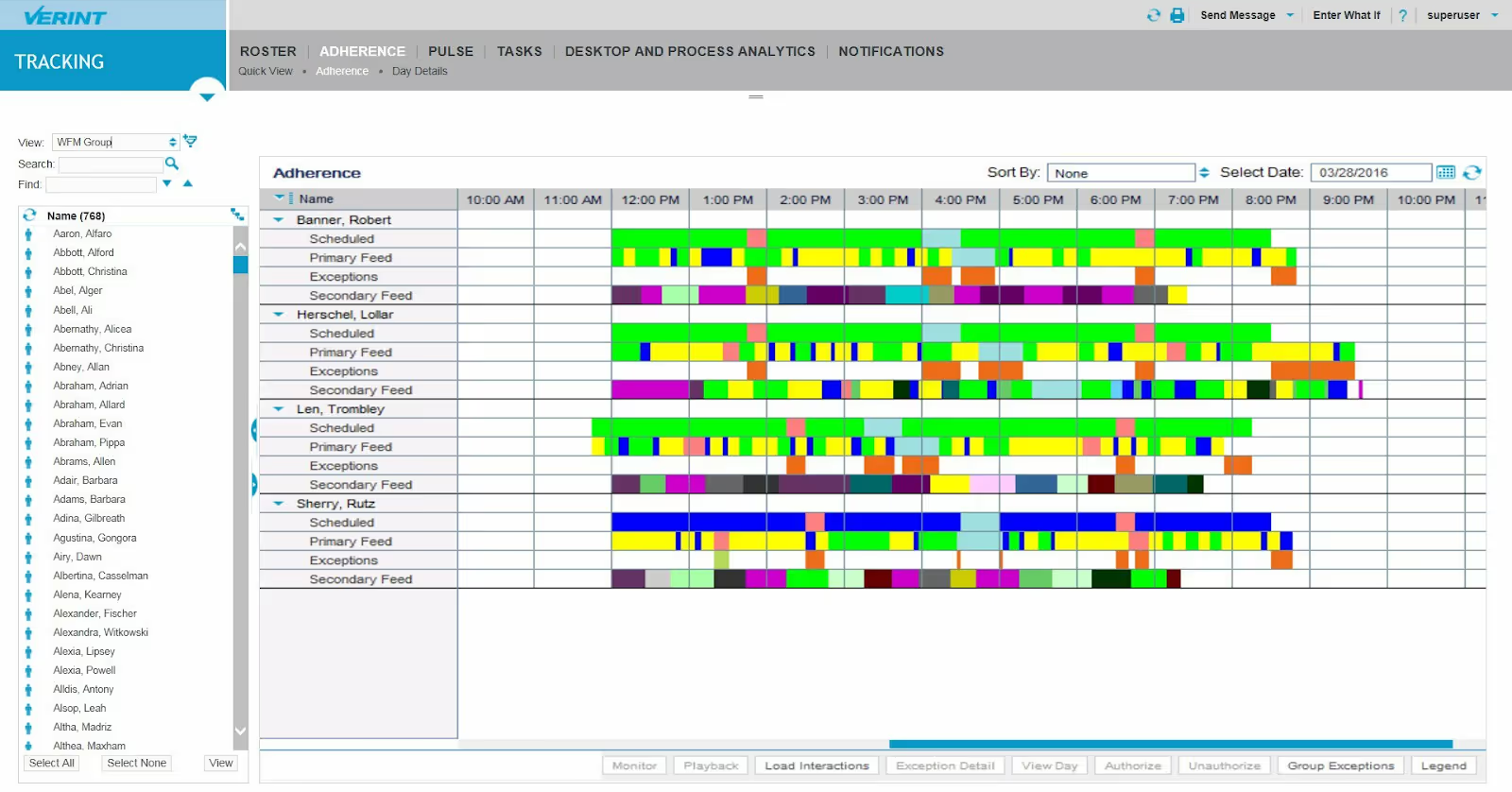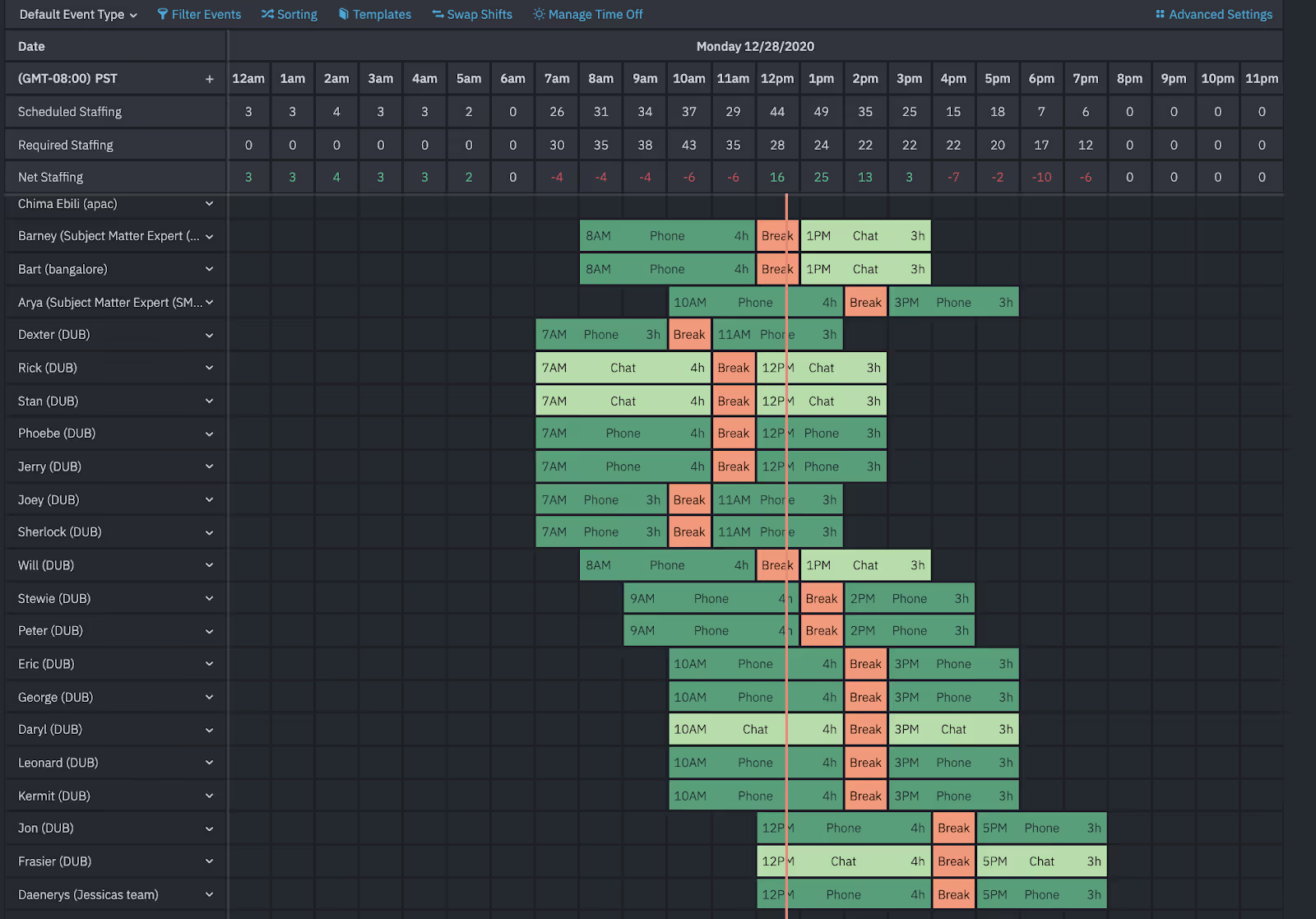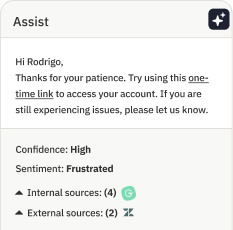Calabrio vs. Verint: How to Pick the Best WFM Software

Calabrio vs. Verint
If you’re in the market for a workforce management (WFM) solution, we sympathize with how difficult it can be to compare your options. Bar creating a huge spreadsheet detailing the pros and cons, you’re left to make up your mind using the strategic sales pages of each tool which, let’s face it, have been specifically designed to sell.
Both Calabrio and Verint have been around for years and were impressive tools in the heyday of call centers. With new tools emerging every day and tech coming on leaps and bounds, these once-formidable options have become clunky and outdated. This doesn’t mean they’re bad options—far from it. They’re both strong contenders if you’re running a phone center with hundreds of team members and they’re incredibly feature-rich, but they fall short in other areas. Most importantly, multi-channel support.
So, who comes out on top?
We’ve pitted two of the best-known WFM tools head-to-Assembled for Modern WFM, head to suss out their strengths, weaknesses, and overall capabilities.
About Calabrio WFM

Calabrio has a lot of skin in the game. Built on a legacy solution founded in 1992, it was originally designed for the call centers of yesteryear and has struggled to move away from single-channel, synchronous issue resolution.
Despite its aging foundations, Calabrio brings some modern features to the party. It supports AI-powered forecasting and automated scheduling to help companies make sure there are enough skilled agents available at all times. The built-in analytics provide a top-level view of call-to-agent ratios, successful resolutions, and seasonalities within schedules. Users can analyze this data to optimize their staff schedules moving forward.
According to Trust Radius, customers tend to use the tool to assign and track employee’s schedules and days off. Employees can then view everyone else’s schedules and submit requests to trade shifts if necessary.
However, it requires a steep learning curve to get set up. Users say the platform takes a while to get used to and recommend involving the entire team in the demo process.
💡 Known for: its legendary status in the phone center industry.
👎 The biggest downside: it’s dated and clunky, with no real-time insight into chats.
About Verint WFM

Verint is another familiar face in the industry and, like Calabrio, has played an integral role in the old world of call centers. It offers similar automated forecasting and scheduling features to Calabrio and aims to simplify the staffing process in call centers to make sure there are enough people in the right place at the right time.
It’s geared towards mid-sized to large enterprises that have complex workforce needs, which means there’s a lot to get your head around at first. In fact, the biggest complaint customers seem to have with Verint is its complexity. Some users call it “intense” and recommend comprehensive training sessions to bring everyone up to speed.
💡 Known for: its incredible amount of features (great—if you know how to use it really well)
👎 The biggest downside: it’s slow to use and requires hands-on configuration and ongoing maintenance.
Strengths
Calabrio
- Tons of brand awareness thanks to its legacy.
- Provides an all-in-one solution with QA, WFM, and call recordings.
- Offers an on-premise solution.
- Robust schedule generation.
- Strong history with highly regulated industries that value compliance over speed, like healthcare and finance.
Verint
- Extremely feature-rich (but can be very complex to get to grips with).
- Agents can submit requests and manage their schedules via a mobile app.
- The modular approach means brands can essentially “build their own” workforce optimization solution.
- Call listening and a dedicated coaching tool.
- A back-office-specific workforce engagement management tool.
Weaknesses
Calabrio
- Clunky Data Explorer feature that comes with a steep learning curve.
- No real-time visibility into chats.
- Limited integration options for modern contact platforms.
- Adherence tracking has its fair share of issues.
- Slow loading times and unresponsive support.
Verint
- The forecasting tool is difficult to use and extremely slow.
- Requires engineering resources to configure and support.
- Requires ongoing professional services budget to maintain the system and train new users.
- It can be hard to integrate historical data.
Pricing
Calabrio and Verint sit at two very different price points. It’s difficult to find concrete pricing information on either tool, but reviews and comparison sites put them in different brackets. While Calabrio uses a per-agent model that starts at $75 per month, Verint offers monthly subscriptions starting at $1,500 a month.
Pros and Cons
Calabrio
Pros
Detailed reporting and analytics
Steep learning curve
Extremely feature-rich
Cons
Expensive to set up and maintain
Comes with a mobile app
Limited flexibility with scheduling
Customizable dashboard widgets
Customization can be complex
Simplistic forecasting
Verint
Pros
Accurate scheduling
Can be pricey depending on your subscription
Scalable and flexible to team needs
Cons
Complex initial set-up
Easy to access insights
Limited customization opportunities
Clunky reporting
The low-down: clunky to implement and a bit outdated
Both Calabrio and Verint are solid product choices if you’re looking for a tool that has helped phone centers schedule and manage staff for decades. But bear in mind that neither is engineered with modern support in mind. It’s tricky to schedule staff across multiple channels and get accurate data from different platforms.
And if you’re looking to hit the ground running, you might struggle with both Calabrio and Verint. Customer reviews show neither tool is quick and easy to set up — quite the opposite. It can take a long time to implement, configure, and train, which can impact productivity and agent performance.
Assembled for Modern WFM
- Designed with omnichannel support in mind. Assembled brings phone conversations, email, chat, social media, and chatbot conversations together in one place, making it easy for you to schedule staff across multiple platforms at once.
- Built with an integration-first approach. The data you see in Assembled is accurate and reliable.
- Speed to value. It’s easy to implement and start using (no lengthy training courses or paid ongoing training to users).
- Partnership, not vendorship. We provide exceptional support and co-build a great customer service experience with our partners.
- No intensive training. Running Assembled doesn’t require intensive training and technical expertise—anyone can do it.
Assembled is built with modern support teams in mind — i.e., those juggling multi-channel strategies — so it easily handles all channels, including phone, email, chat, and other async channels.
Our tool was built to elevate customer service and create a great customer experience through accurate forecasting, optimized scheduling, and detailed analytics. It’s not a huge learning curve, either. There are ample demos and resources to get you started, and you can undergo comprehensive training with our expert team who’ll show you exactly how you and your team can make the most of the features.
See what modern WFM should look like 👀
Assembled: accurate forecasting without a major learning curve

Assembled integrates with most major contact platforms, including Google Calendar, Slack, and social media sites — basically, it allows your team to meet customers where they already are. We’ve examined other WFM tools in great detail and have created a solution that does all the powerful automated scheduling stuff without requiring a massive learning curve or hours of training to get your team up to speed.
Here’s what makes us different:
- Speedy onboarding and dedicated support
- Fully customizable and intuitive scheduling
- Cross-team visibility so everyone knows what’s going on at all times
- Accurate and actionable forecasting that takes seasonalities and outliers into consideration
- Robust reporting from all channels in one central place
“Assembled makes me look like a wizard when it comes to forecasting. I'm able to accurately project labor needs which drives down our cost to serve and accelerates our path to profitability. It is incredibly easy to use, both administratively and from a front-line agent perspective. It is my team's first window they open each day. And all this goes without mentioning the WORLD CLASS customer support that they offer. No vendor has ever done it better in my experience.” Cliff F.
“I find the tool super easy to use. You have almost everything you need. There are a lot of cool features that make your life easy, like schedules, Team performance reports, individual reports, real-time analysis, and so on. The implementation was easy and our engineers received all the needed help to make it possible via API.”
Happy Assembled customer.
So, while Calabrio WFM and Verint WFM are good contenders, they don’t quite offer the same perks as a modern workforce optimization solution like Assembled. They’re both robust tools ideal for large-scale phone centers and have a legacy behind them, but they struggle to keep up with modern-day demands.
While Assembled is agile at managing async support across the majority of channels your customers are on, Calabrio and Verint perform particularly well at managing staff in old-fashioned call centers.
But the results are in: if you’re looking for a WFM solution with powerful scheduling and forecasting and can handle workflows across email, chat, phone, and chatbots, Assembled is the clear winner.
Ready to see how modern WFM can help you? Get started with Assembled today.




